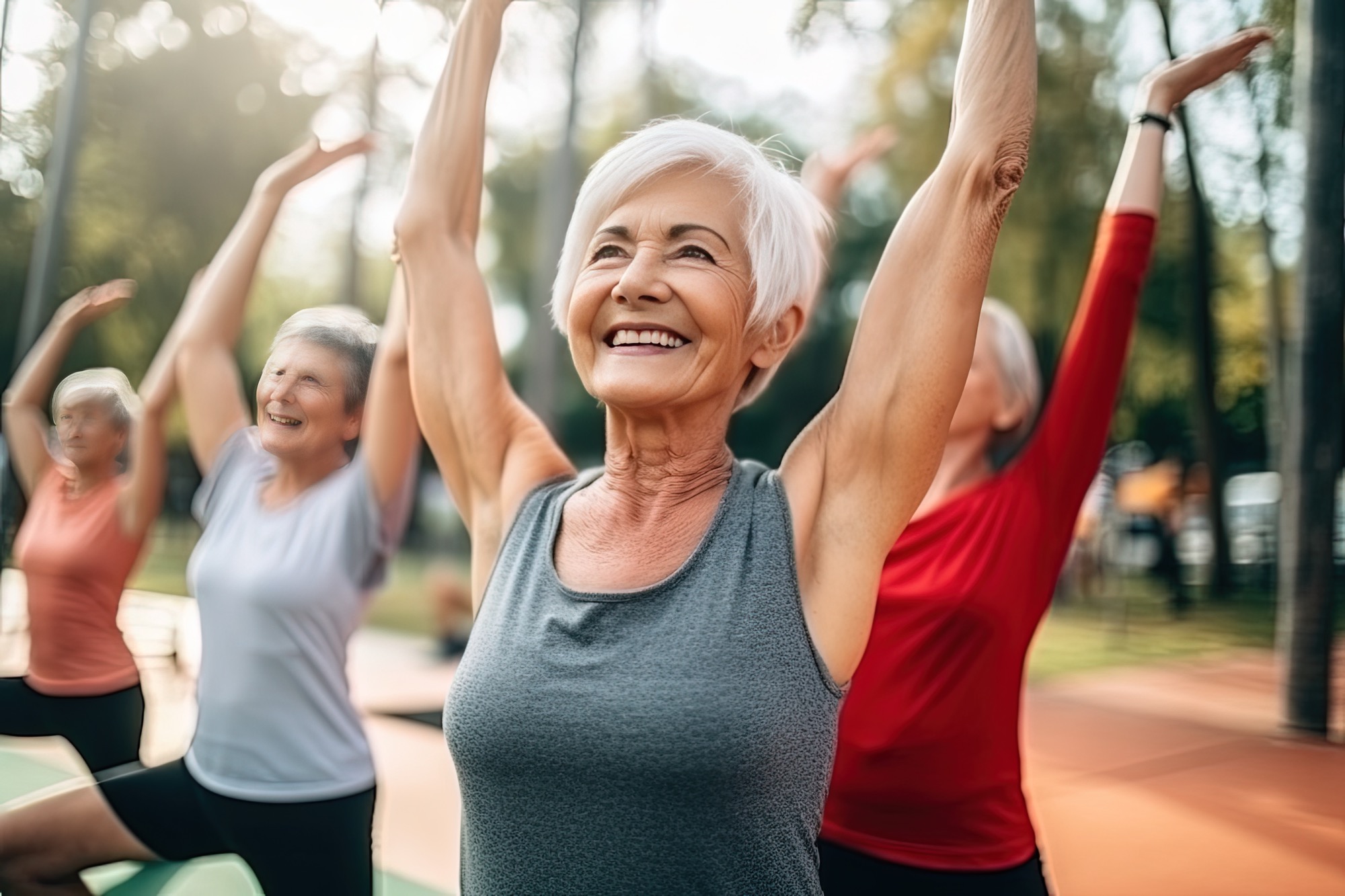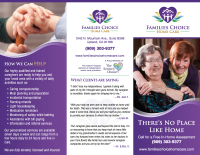
Exercise for seniors is essential when it comes to maintaining strength, endurance, and cardiovascular health. The U.S. Department of Health & Human Services writes that incorporating physical activities into the daily/weekly routine offers substantial health benefits for older adults.
In addition to reducing the risk of non-communicable diseases (NCDs) like heart disease and type 2 diabetes, getting enough exercise delays, prevents, or manages many chronic diseases and improves the quality of daily life.
Adults who exercise regularly also reap the benefits of:
- A decreased risk of depression
- Reduced anxiety
- Improved appetite
- A better night’s sleep
- More energy
- Extended mobility and independence
Exercise Guidelines for Older Adults
“Exercise for seniors” is an umbrella term incorporating aerobic, strength training, balance and core exercises, and mental exercises that keep the neurons firing.
In addition to improving physical health, the benefits of exercise for seniors extend into increased independence and autonomy, especially for seniors choosing to age in place.
Adults 55 years old and older should strive to:
- Make some form of exercise a part of their daily routine, rotating exercises to balance cardio, strength, and core/balance fitness.
- Do at least 150 minutes of moderate-intensity aerobic physical activity throughout the week.
- Or do at least 75 minutes of vigorous-intensity aerobic physical activity throughout the week or an equivalent combination of moderate- and vigorous-intensity activity.
- Break aerobic exercises into intervals of no less than 10 minutes each if longer sessions are too much.
- Increase their moderate-intensity aerobic physical activity to 300 minutes per week, or engage in 150 minutes of vigorous-intensity aerobic physical activity per week or an equivalent combination of moderate and vigorous-intensity activity as they build strength and stamina.
- Include muscle-strengthening activities involving major muscle groups, which should be done two or more days a week.
- Incorporate activities and games that stimulate the brain.
There are plenty of ways to make exercise more fun, which include:
- Scheduling video dates to participate in exercises with them. Make a family schedule—including willing grandchildren—to participate in various exercise routines at least once a week. What a fun way to bond, even from long distances, while supporting connectivity and keeping everyone more accountable for staying in shape.
- Finding and scheduling senior-specific exercise classes. Contact the local senior center and search online at local recreation centers, gyms, yoga studios, aquatic centers, dance studios, etc., to find senior-specific exercise classes. Arrange transportation services (if necessary) so aging loved ones can take group classes. This gets them out of the house and engaged in their community.
- Making it a part of their companion or personal care services. Does your senior loved one have in-home support? Or, are you searching for companion or personal services to support your mom or dad at home? If so, discuss adding exercise to the list of expected activities. Caregivers can keep exercise on the daily schedule and support physical and occupational therapy programs to ensure it happens.
So, what does an exercise plan for seniors look like? Here are examples of exercises you can incorporate into a daily routine. Again, remember that even 10 minutes at a time, a few times a day, is far better than doing nothing. Every little bit adds up.
NOTE: Always review any exercise plan with your loved one’s physician to ensure it’s safe and to glean additional personalized recommendations.
Chair Exercises for Seniors
While chair exercises for seniors are excellent for those with mobility issues or who are mostly chair/bed-bound, they’re also a great alternative on rainy days or when you’re not feeling 100% yourself. Two examples include:
Knee and Leg Raises for Circulation
Improving circulation in your feet and legs can be accomplished by flexing and stretching in a series of repetitive ankle and leg exercises.
Place feet flat on the floor approximately shoulder-width apart. Start by raising your toes off the ground while keeping your ankle on the floor. Hold your toes up for the count of three, then place them flat on the floor again. You can increase the time you keep the toes raised with each repetition until you hold the stretch for 20 seconds.
After your toe stretches, you can lift the entire foot off the floor. Begin with the leg bent and hold it for a few seconds. Then, try straightening your knee and keeping your leg straight in front of you.
Once you have completed five repetitions of each exercise for one leg, repeat the series with the other one.
Hand and Arm Exercises for Circulation
You can also stretch your fingers, hands, and arms to increase and improve circulation in your upper extremities. Raise one or both arms to shoulder height straight in front of you. Lift your fingers to point up (as if telling someone to stop).
Tense your arm muscles as if you are pushing something forward. Hold for the count of 10. Relax and lower your arms to your lap. Raise your arms over your head or as high as you can. Hold for the count of 10 and then slowly lower your arms to rest on your lap or at your side.
If you can do these exercises with a small weight in your hand or by wearing wrist weights, you can add muscle tone and bone mass while improving circulation.
You can also use tension bands to do gentle stretches. Hold your arms at shoulder height. Place one end of the tension band in each hand and gently pull one towards your chest while the other stretches to your side or straight in front of you.
Balance Exercises for Seniors
Most senior fall accidents are related to compromised strength and balance. Incorporating some of these exercises, none of which take very long, significantly minimizes fall risks.
Single-Leg Balance
This exercise uses a solid, four-legged chair for support. First, stand with the back of the chair in front of you. Then, holding on with both hands, lift one foot slightly off the ground and stand on the remaining foot for as long as possible but no more than 30 seconds. Now, switch feet. Gradually, you can extend the time or lift the leg a little higher.
Heel-to-Toe Walking
Start this exercise with a wall or the back of a couch within easy reach in case you need something to steady you. Now walk forward, moving your feet heel-to-toe with each step. Try to take as many steps as possible without touching the couch. You can use a line of masking tape to help keep a straight centerline.
Rock the Boat
Stand with your feet hip-width apart. Again, it’s best to have a chair, couch, or table close by to regain balance if you wobble. Raise one leg and hold it as long as possible, aiming for 30 seconds. Then, lower the leg and do the same thing on the other side.
Joining a senior yoga class is another way to work on strength and balance while also learning tools for stress and pain management.
Core Exercises for Seniors
Lower back pain is one of the most common physical discomforts, especially as we age. Core exercises notably alleviate back pain while also improving senior balance.
Sitting or Standing Side Bends
Sit in an armless chair with feet flat on the ground and hip-width apart. If balance is at all an issue, make sure you feel secure. You can also do the stretch sitting on the floor with your legs hip-width apart in front of you or while sitting cross-legged.
Raise your arms above the head and clasp your hands together with intertwined fingers. Slowly bend to the right. Stop if you feel any discomfort. Enjoy the moment and stay there for a breath or two before slowly coming back to the standing-straight position. Repeat to the other side.
Do these on each side at least five times, working your way up to 10 or 15 repetitions. You can also switch the clasp of your hand in between cycles (so the opposite thumb is in front), which is a simple way to form new connections in the brain.
You can perform these same exercises in a standing position (do them near a sturdy chair, table, or similar support in case you need to reach out for balance). When standing, you’ll place your feet hip-width apart and straighten your legs without locking the knees.
Bridge Pose
Bridge pose is a comfortable stretch and core strengthening exercise for people of all ages and abilities. Only “bridge” as much as you can with relative comfort and zero strain. Over time, your bridge will become higher and higher.
Click here to see a picture of a bridge pose and to read step-by-step instructions. Note that in the picture, the woman’s hands are clasped underneath her. We recommend, however, that you start with the arms flat along your sides, palms down.
If you choose to deepen the pose by clasping your hands, that’s great. You can also click here to read about bridge pose modifications.
Aquatic Exercises for Seniors
Our clients are huge fans of aquatic exercises, which can be done year-round in an indoor pool or as a seasonal option during the warmer months. The buoyancy and full-body support offered by water make it one of the safest and most therapeutic mediums for senior exercises.
Joining a class is the best way to exercise in a pool because you have the benefit of an aquatic exercise expert and varying routines, which keep it more fun. Plus, you get to be social.
However, you can also do your own simple and fun water aerobic exercises in a backyard pool or Jacuzzi. If you prefer doing them at home, make sure to have a water exercise partner for safety’s sake.
Families Choice Home Care Keeps Senior Fitness on Track
Are you, or someone you love, a senior who could benefit from a more regular exercise routine? Would you like expert information or answers to questions about safe exercises for seniors and how they can be incorporated while aging in place?
At Families Choice Home Care, we love helping our clients keep mentally, socially, and physically fit. Our caregivers create regular exercise routines and can even participate with the clients to keep them on track to reach their goals. Click below to schedule a free assessment and get started today!





